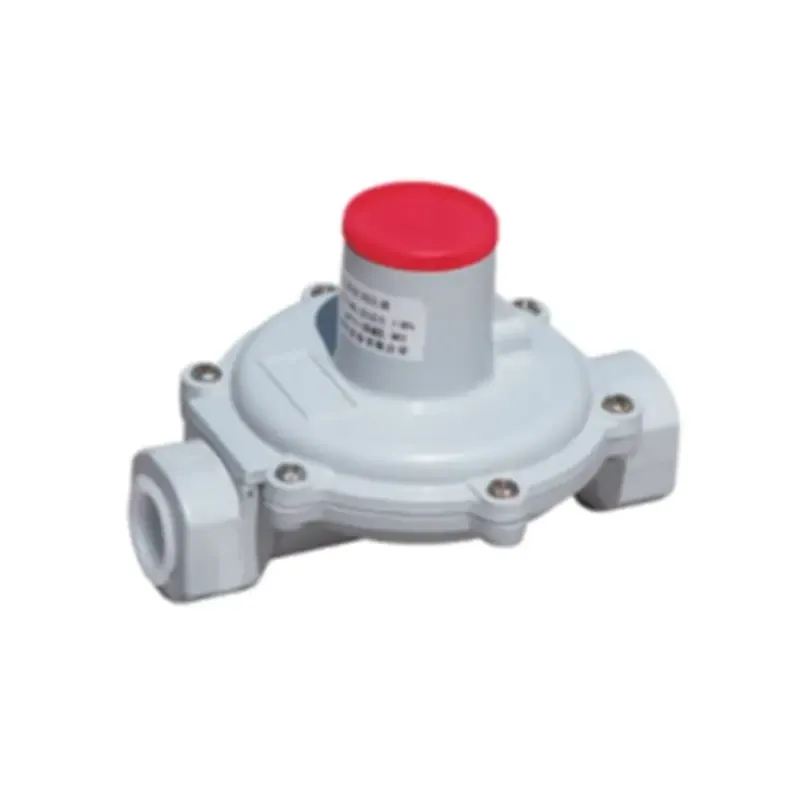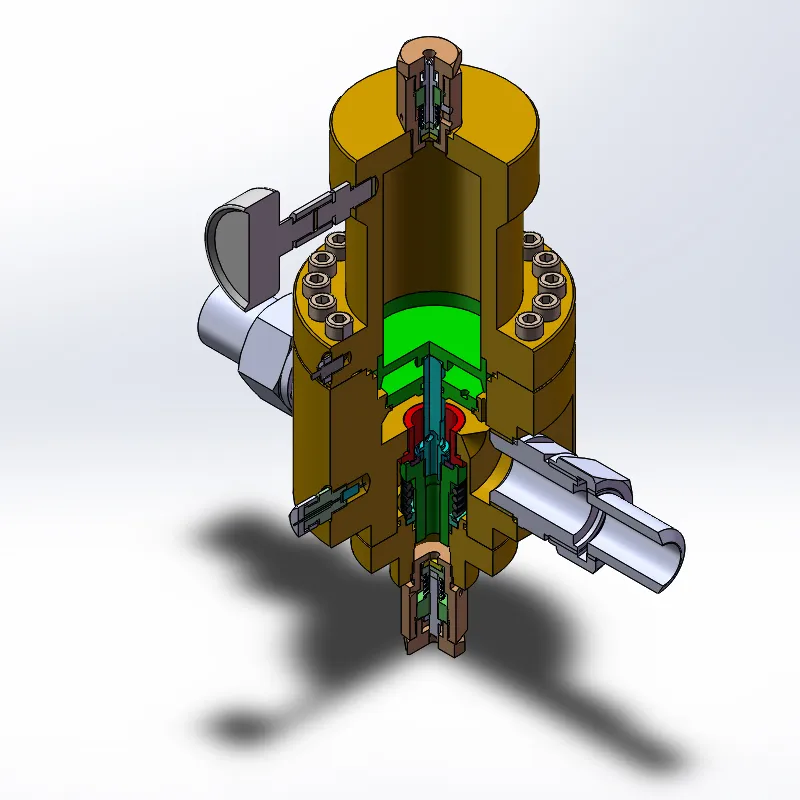
Jun . 08, 2025 12:54
Back to list
Premium Reducing Stations for Efficient Gas Pressure Control
- The essential functionality and industrial importance of gas pressure regulation
- Cutting-edge engineering advancements in pressure management technology
- Performance benchmark analysis of leading pressure reduction equipment
- Tailored system architecture approaches for specific operating conditions
- Regional implementation case studies across energy sectors
- Integration with modern monitoring and automation platforms
- Strategic considerations for next-generation pressure regulation infrastructure

(reducing station)
Understanding Natural Gas Pressure Reducing Stations
These critical installations serve as the circulatory system's pressure regulators for gas distribution networks. Natural gas pressure reducing station
s form the backbone of midstream infrastructure, controlling pressure levels between transmission pipelines (operating at 200-1500 psi) and local distribution systems (typically below 200 psi). The safety implications are significant - uncontrolled pressure could damage downstream equipment and create hazardous conditions. Modern facilities incorporate multi-stage reduction capabilities with dual independent trains maintaining continuous operation during maintenance cycles. According to industry analysis by Global Energy Insights, properly engineered reduction infrastructure prevents approximately $3.7 billion annually in potential pipeline incidents globally.
Technological Advancements in Gas Regulation Systems
Contemporary reducing systems now feature microprocessor-controlled actuators with response times under 0.8 seconds during pressure excursions. Advanced materials like duplex stainless steel (UNS S32205) in valve bodies increase service life by 40% compared to standard carbon steel when handling contaminants. The development of self-diagnosing regulators capable of predicting maintenance requirements 90 days in advance has revolutionized operational reliability. Major technological milestones include:
• Integrated temperature compensation adjusting gas flow properties in real-time
• Wireless monitoring modules transmitting performance data to centralized SCADA
• Advanced noise attenuation systems reducing sound emissions below 65 dBA
• Integrated filtration achieving 99.98% particulate removal at 5 micron level
Comparative Analysis of Leading Station Manufacturers
When evaluating pressure management solutions, critical performance metrics separate industry innovators from conventional suppliers. The benchmarking table below highlights operational parameters based on North American Natural Gas Association standards:
| Performance Parameter | Standard Solutions | Advanced Solutions | Premium Solutions |
|---|---|---|---|
| Pressure Control Accuracy | ±3.5% | ±1.2% | ±0.5% |
| Max Flow Capacity (MMSCFD) | 120 | 350 | 800 |
| Emergency Response Time | 18 seconds | 7 seconds | 1.8 seconds |
| Service Interval Frequency | Quarterly | Biannual | 24 months |
Application-Based Engineering Approaches
Customized station configurations address unique operational challenges across different environments. Cryogenic stations for LNG applications require specialized metallurgy capable of withstanding -162°C temperatures without compromising pressure control integrity. In contrast, desert installations prioritize sand filtration systems and heat dissipation technologies. Urban installations feature enhanced security protocols and advanced odorization systems. Modular design now enables scalable deployment from compact 20'x8' stations serving residential developments to complex 4-acre facilities for distribution hubs. For high-velocity applications, multi-valve sequencing configurations maintain precise control even during 300% instantaneous flow variations.
Industry Implementation Success Stories
Regional operator analysis demonstrates performance outcomes across diverse applications:
Northeast US Distribution Network: Installation of 27 modular stations with remote monitoring capabilities decreased pressure-related incident reports by 83% within operational zones.
Canadian Pipeline Integration: Automated reducing configurations along 500km transmission corridors reduced compressor station energy consumption by 18,000 MWh annually.
Offshore Platform Installation: Marine-grade pressure regulation systems with quadruple redundancy maintained continuous operations despite Category 4 hurricane conditions last season.
Smart Integration Capabilities
Modern reducing infrastructure incorporates IIoT connectivity transforming operational visibility. Cloud-based analytics platforms process 4.7 million data points daily from integrated sensors measuring parameters like:
• Real-time gas composition analysis for BTU adjustment
• Predictive failure modeling using vibration pattern recognition
• Automated inventory tracking of odorant consumption
• Cybersecurity protocols meeting API Standard 1164 Level 3
Field tests demonstrate these systems self-correct calibration drift by 0.03% daily and eliminate unnecessary site visits through remote diagnostics.
Strategic Implementation of Gas Pressure Infrastructure
The evolution toward autonomous pressure reducing stations requires careful transition planning. Organizations adopting modular systems achieve 40% faster deployment than conventional construction methods. Comprehensive lifecycle analysis should prioritize adaptable designs accommodating future hydrogen blends without requiring complete system replacement. According to Energy Infrastructure Council projections, operators investing in next-generation stations realize ROI within 18-30 months through reduced maintenance burdens and incident mitigation. Choosing purpose-built configurations rather than standardized solutions ultimately determines both operational reliability and long-term financial performance in gas distribution ecosystems.

(reducing station)
FAQS on reducing station
以下是根据要求创建的5组英文FAQs,围绕核心关键词[reducing station]及其相关词,使用HTML富文本格式返回:Q: What is a natural gas pressure reducing station?
A: A natural gas pressure reducing station is a facility that lowers high-pressure gas from transmission pipelines to safe distribution levels. It ensures stable pressure for residential/commercial use through control valves and regulators. Safety features include emergency shutoff valves and pressure relief systems.Q: Why are gas pressure reducing stations critical for pipelines?
A: Gas pressure reducing stations maintain optimal pressure flow across distribution networks. They prevent pipeline damage from excessive pressure while enabling efficient meter operation. Regular maintenance avoids leaks and ensures continuous supply stability.Q: Where are reducing stations typically installed?
A: Reducing stations are installed at pipeline interconnections, city gate entries, and industrial facility boundaries. They transition gas between high-pressure transmission lines and low-pressure local networks. Strategic placement considers proximity to demand zones and accessibility for maintenance.Q: How do reducing stations handle pressure fluctuations?
A: Reducing stations use regulator valves that automatically adjust based on downstream demand. Pilot controls and sensing lines provide real-time feedback to modulate flow. Backup regulators activate if primary systems detect abnormal pressure spikes.Q: What safety standards apply to gas pressure reducing stations?
A: Stations must comply with ASME B31.8 for pipeline safety and API RP 1173 for integrity management. Requirements include leak detection systems, cathodic protection against corrosion, and explosion-proof electrical components. Regular inspections validate regulator performance and emission controls.Latest news
-
What Role Do Pressure Reducers Play in Industrial Systems?NewsJun.12,2025
-
What Role Do Gas Valves Play in Industrial Safety and Functionality?NewsJun.12,2025
-
Key Components in Energy Management and Temperature ControlNewsJun.12,2025
-
Integral Components in Mechanical and Energy SystemsNewsJun.12,2025
-
How Do Industrial Valves and Filters Ensure System Safety and Efficiency?NewsJun.12,2025
-
Essential Components for Industrial Fluid Management: Valves and SystemsNewsJun.12,2025

